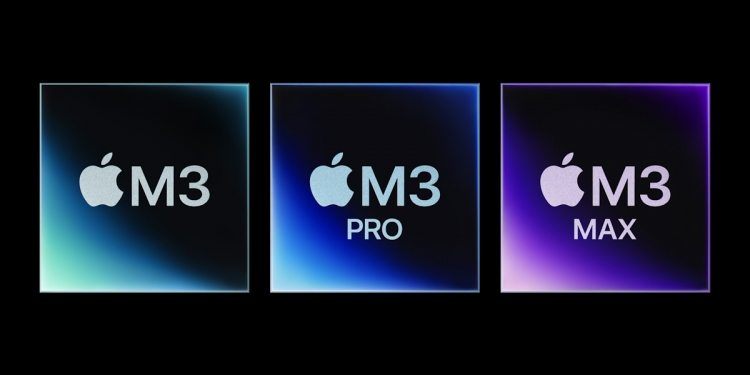The Apple Silicon family has just been expanded once again with the unveiling of the Apple M3 family chips at the company’s Mac-oriented Scary Fast event today. For starters, the new series is available in three different chips including the standard M3 as well as the higher-end M3 Pro and M3 Max.
Built using 3nm process technology, the M3 family marked the arrival of a brand-new GPU which Apple claimed to offer the “largest leap forward in graphics architecture ever in Apple Silicon”. One of the features that helped support this claim is Dynamic Caching which apparently allows the new GPU to manage memory resources more efficiently.
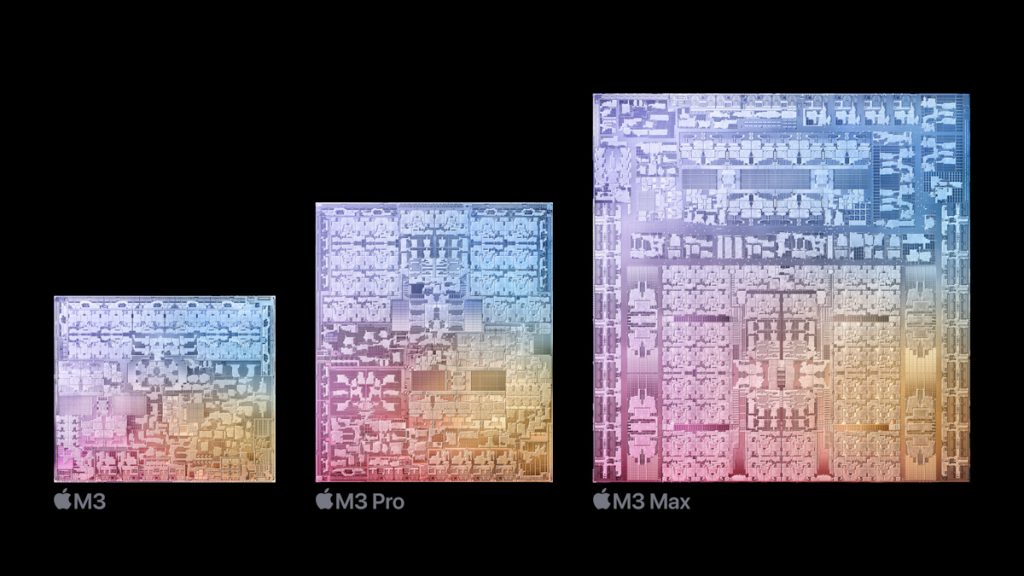
New GPU with Dynamic Caching, ray tracing, mesh shading
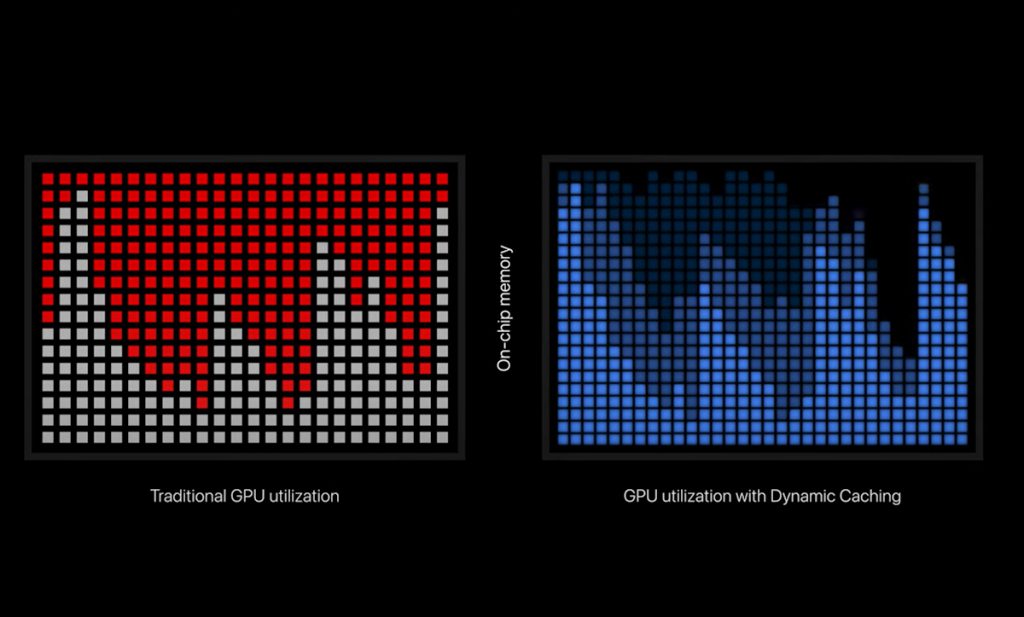
Claimed to be an industry’s first, Dynamic Caching is a hardware-based approach as opposed to the traditional software-oriented allocation method. Through the new feature, each task is given the exact amount of memory needed and Apple claimed that this increases average memory utilisation which ultimately resulted in increased performance.
The new GPU has also unlocked hardware-accelerated ray tracing capability on Mac which allows for more accurate shadows and reflections mainly in games. It can also perform hardware-accelerated mesh shading that essentially improves Mac’s geometry processing capability.
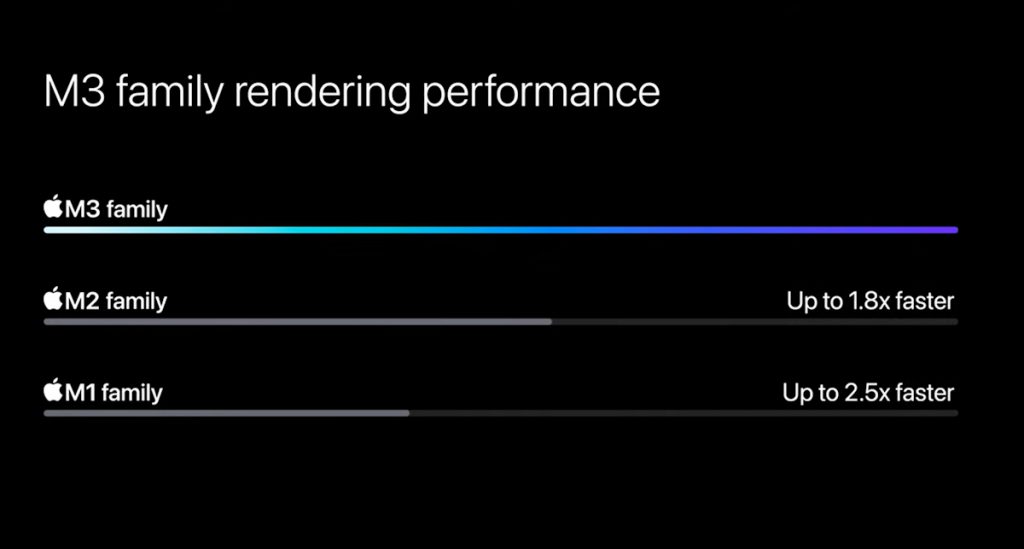
Figuratively, Apple claimed that the new GPU inside the M3 family of chips is up to 50% faster than the comparable M1 chips while the performance difference between them and last year’s M2 counterparts is up to 20%. The company also said that the M3 chips can deliver up to 2.5x faster rendering performance than the M1 family as well as up to 1.8x faster when compared to the M2 family.
Faster CPU and Neural Engine
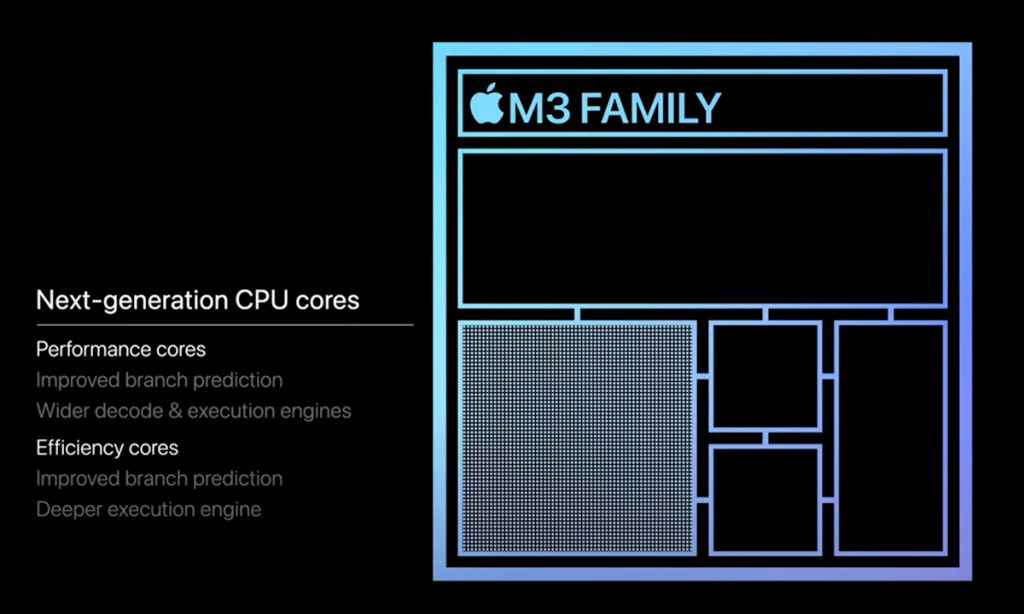
Meanwhile, the CPU inside the M3 chips is also much faster than previous Apple Silicon offerings. Apple claimed that its performance cores are up to 30% faster than the CPU in the M1 family as well as up to 15% faster when put against their M2 equivalents.
The CPU’s efficiency cores offer even better improvements with up to 50% faster than the M1 family while they are also 30% faster than the M2 family. All three M3 chips also come with a 16-core Neural Engine that up is to 60% faster than the Neural Engine in the M1 family as well as 15% faster than the implementation for the M2 family.
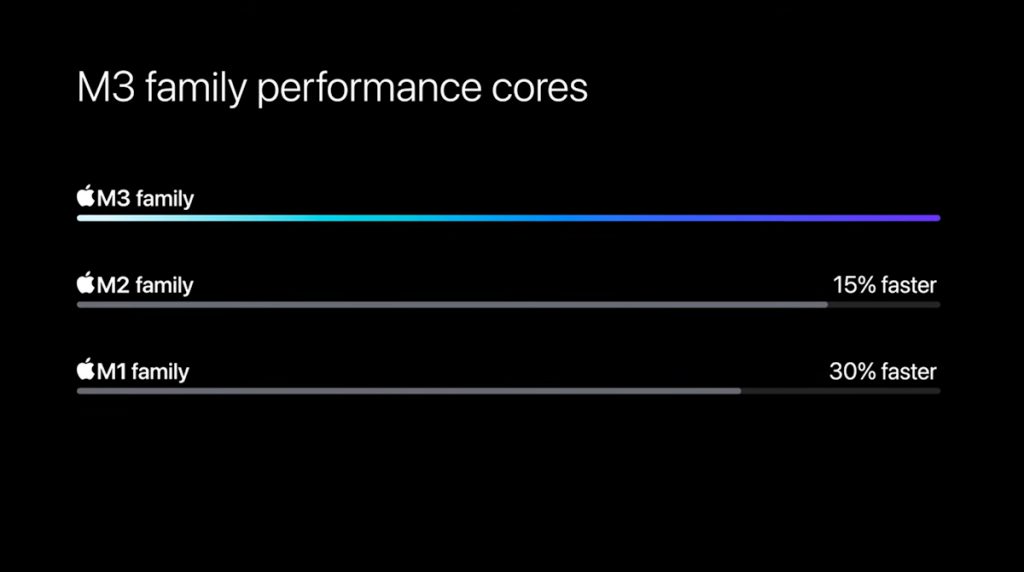
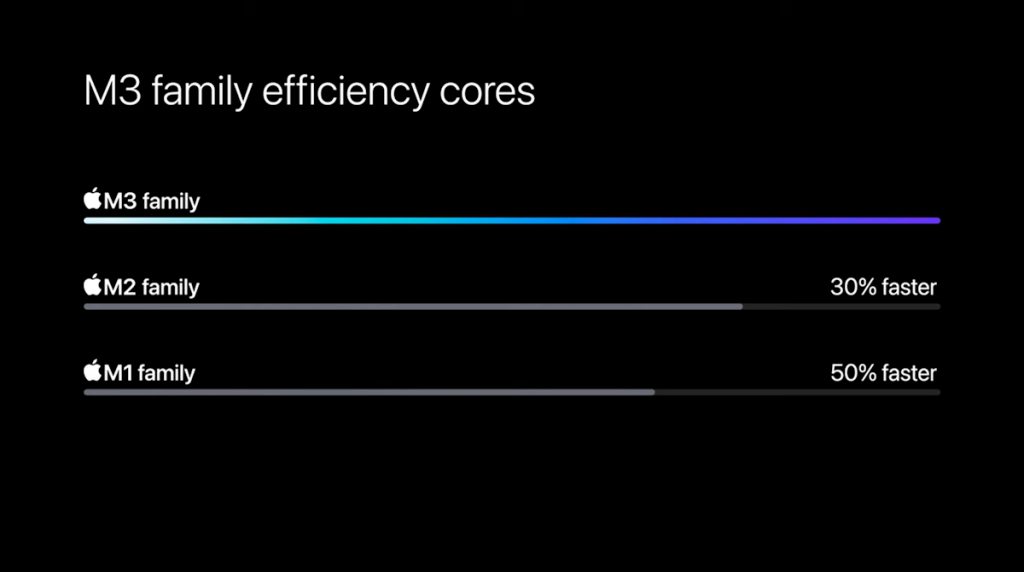
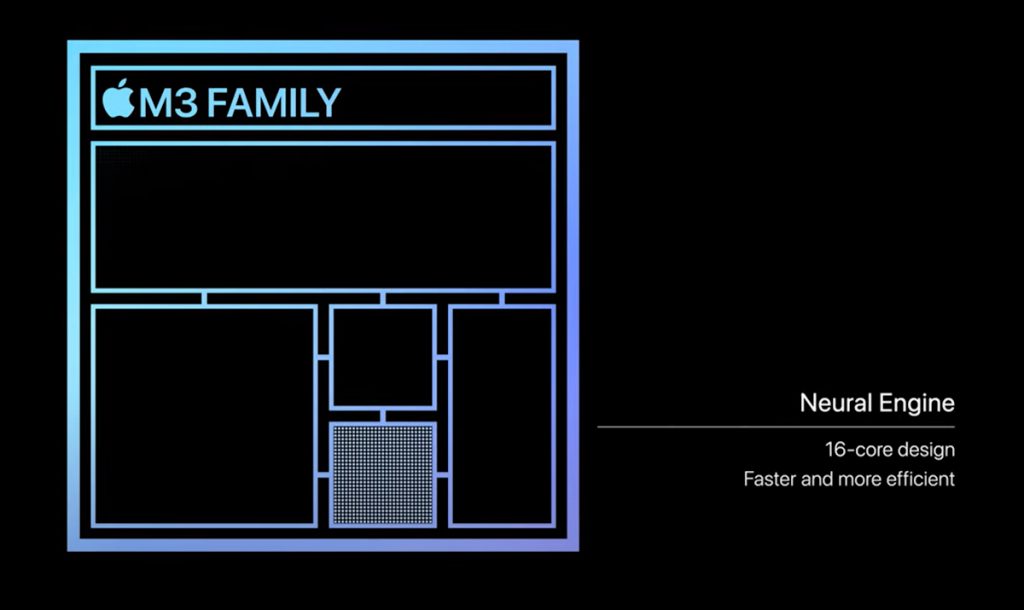
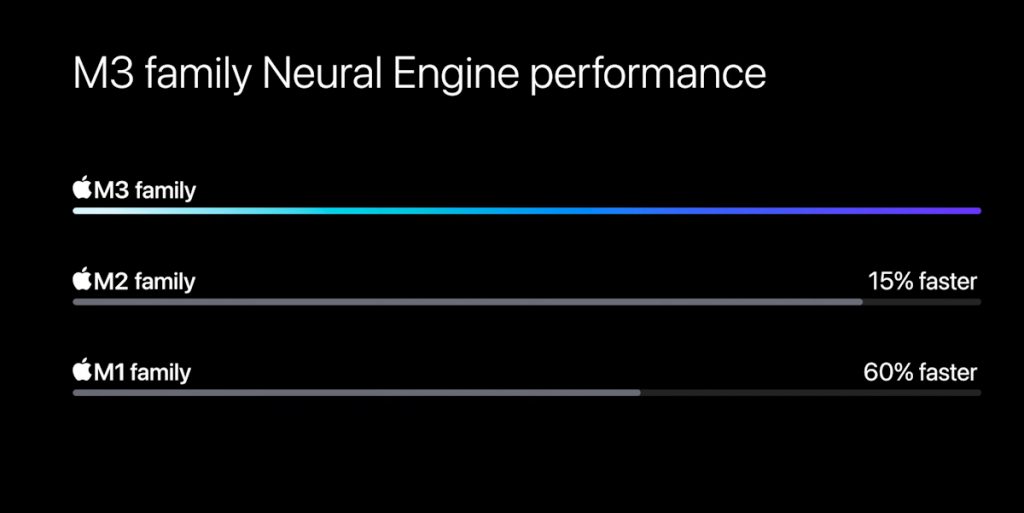
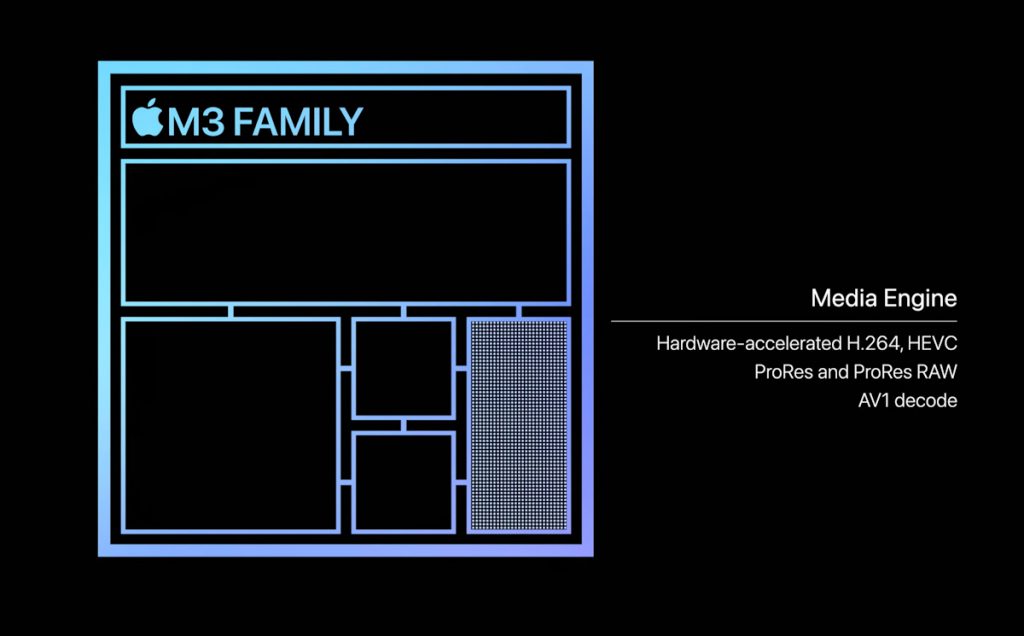
As you may expect, M3 chips also have their own dedicated media engine which provides hardware acceleration for video codecs such as H.264, HEVC, ProRes, and ProRes RAW. It also enables these chips to deliver hardware decoding of AV1 codec which is used by streaming services such as YouTube and Netflix.
Power efficiency remains essential
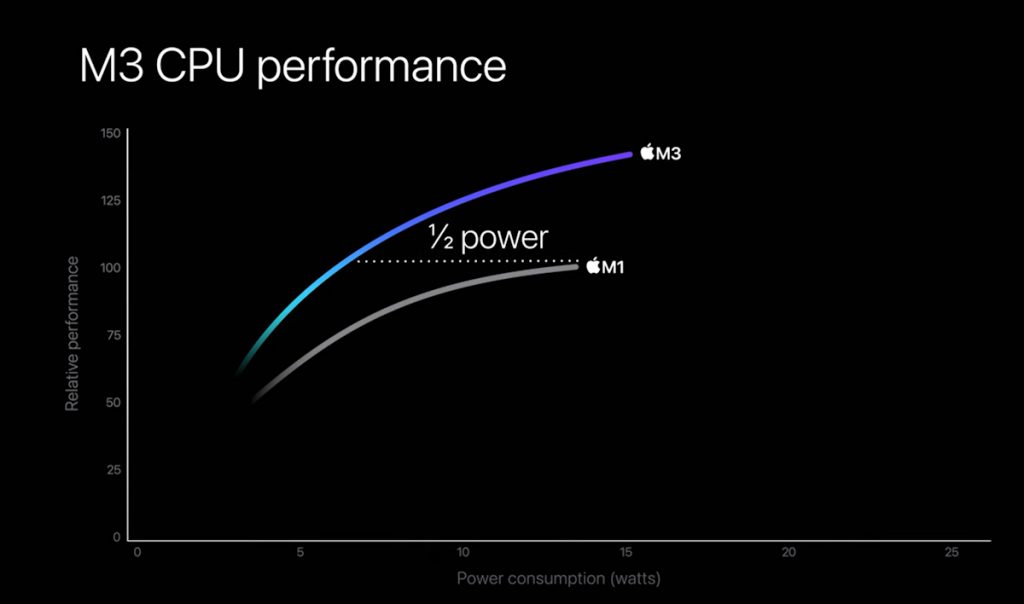
Meanwhile, Apple Silicon is known for its tremendous power efficiency and things are no different for the new M3 chips. Their new GPU apparently can deliver the same performance as M1’s GPU at just half the power and this applies to the CPU as well. Not only that, the performance of the CPU within the M3 family can go up to 35% when they are running at peak power.
Apple also didn’t forget to flex M3’s power efficiency against an Intel Core chip. The company said that the M3 chips only require a quarter of the power that a 12-core Intel Core i7-1360P consumes to deliver the same relative performance.
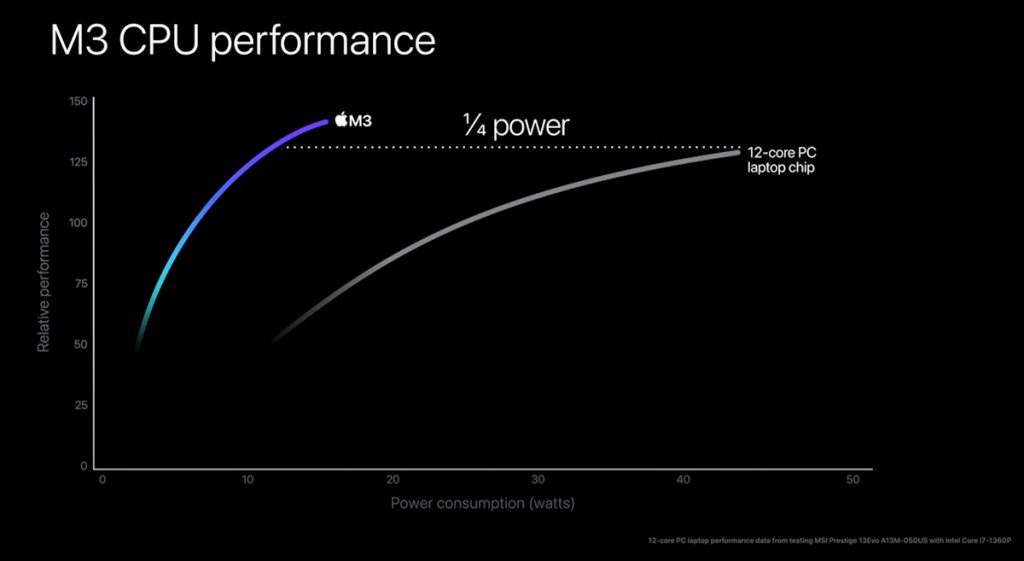
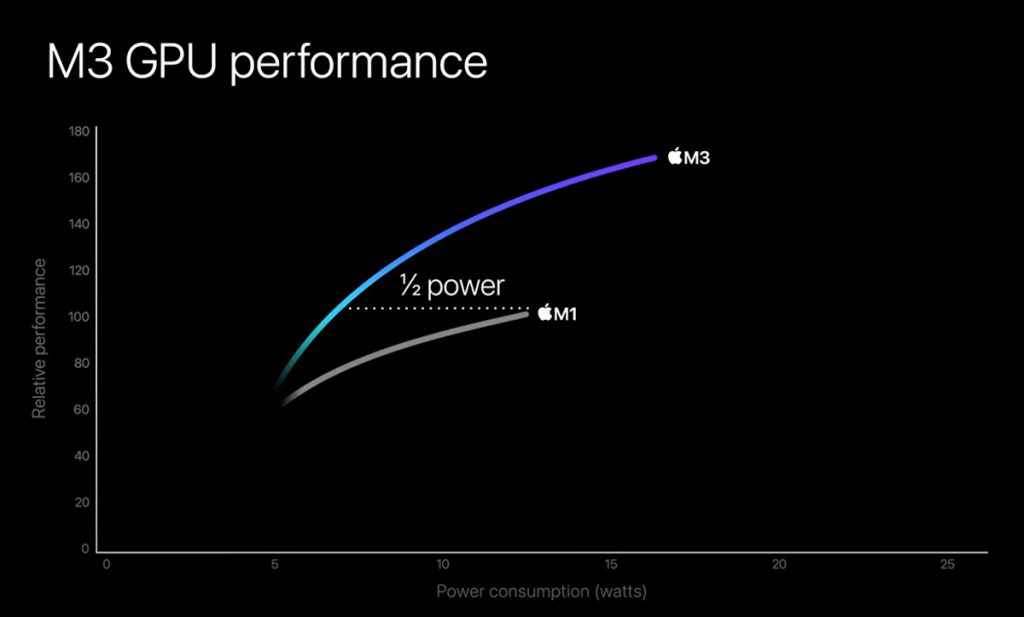
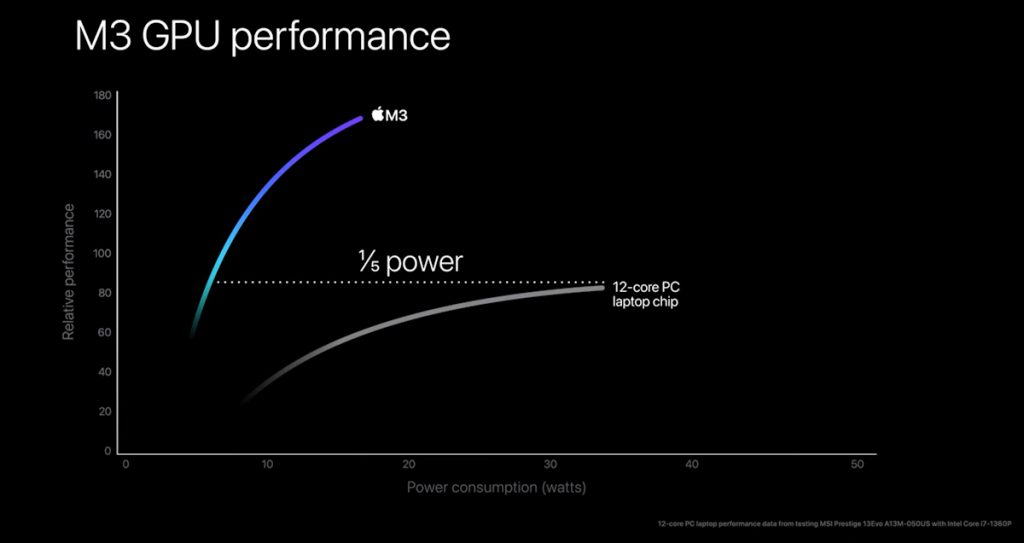
The GPU on M3 chips can apparently hit the same relative performance as per Intel Iris Xe graphics inside the Core i7-1360P with just 1/5 of the power required by the Intel chip. Then again, let’s not forget that Intel’s integrated graphic is not exactly a tough opponent.
Meet the Apple M3 family
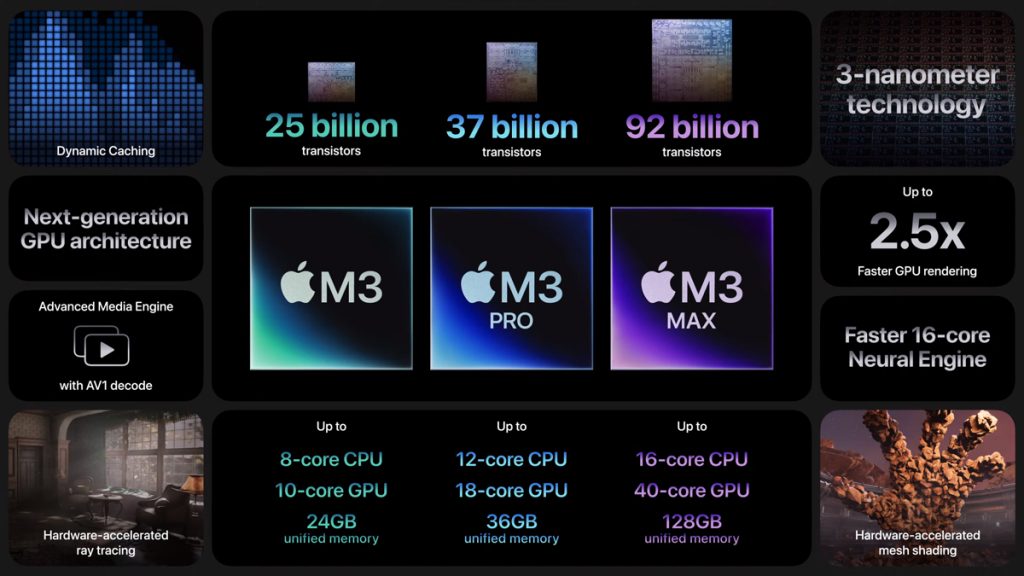
The standard Apple M3 comes standard with 8-core CPU and 10-core GPU while it can be obtained with up to 24GB of unified memory.
For those who want more performance, they can opt for the M3 Pro which has up to 12-core CPU, 18-core GPU, and 36GB of memory. M3 Max pushes things to the limit by having up to 16-core CPU, and 40-core GPU alongside up to 128GB of memory.
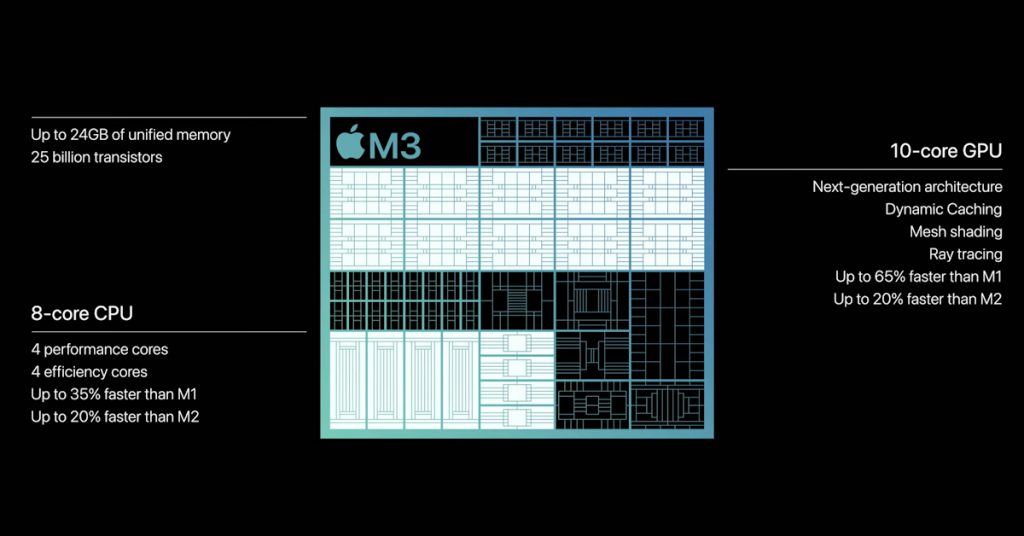
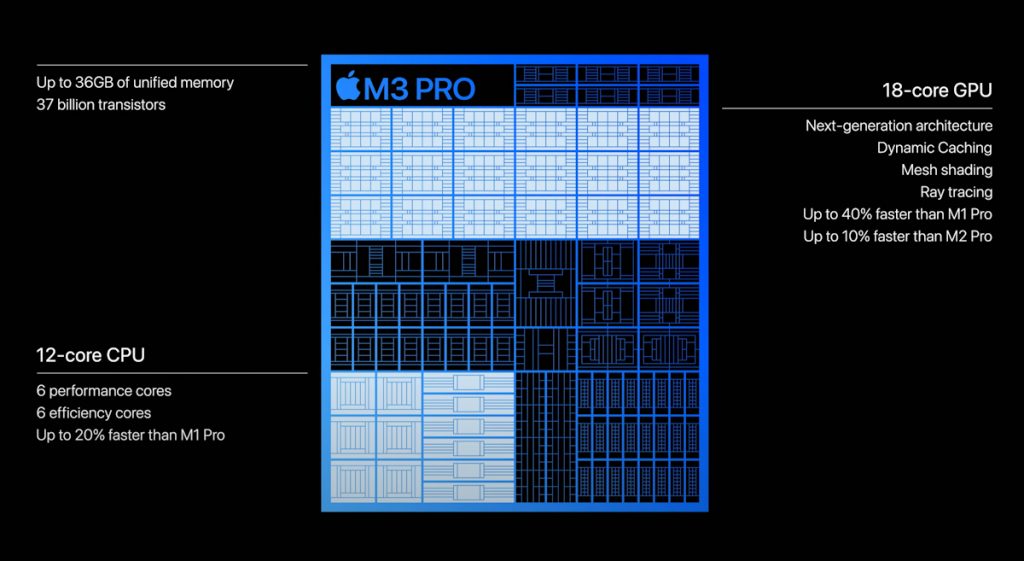
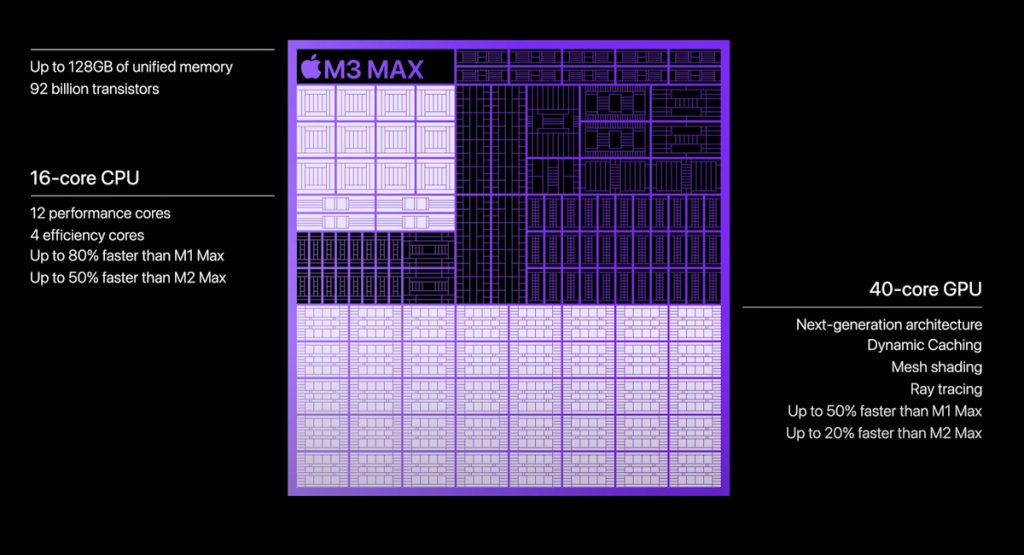

The introduction of these new processors also marked the arrival of new 14- and 16-inch MacBook Pro models powered by these M3 chips. You can’t purchase them in Malaysia just yet although Apple did reveal their local pricing which starts from RM7,499 and RM11,999, respectively.
In addition to that, the iMac has also been updated with the new processor family. Just like the MacBook Pro models, the M3-powered iMac is not available in Malaysia just yet although we already know its starting price of RM6,299.

